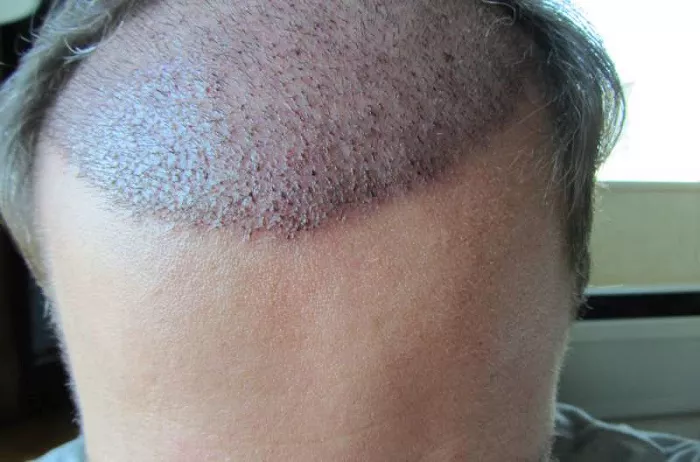Hair transplant surgery is an effective way to restore hair growth in areas where hair loss has occurred. However, after the surgery, patients may experience scabbing in the transplant area. This scabbing is a natural part of the healing process, but it can be uncomfortable and unsightly. In this article, we will discuss how long it takes for hair transplant scabs to fall off and what patients can do to promote healing.
Understanding the Healing Process
Before we discuss how long it takes for hair transplant scabs to fall off, it is important to understand the healing process. After the hair transplant surgery, the scalp will be red, swollen, and tender. This is normal and should subside within a few days. The transplanted hair follicles will also be surrounded by scabs, which are a result of the body’s natural healing process. These scabs protect the newly transplanted hair follicles and help to prevent infection.
The healing process after hair transplant surgery can be divided into several stages. During the first week after surgery, patients should avoid touching or scratching the transplant area. Doing so can dislodge the scabs and damage the newly transplanted hair follicles. Patients should also avoid strenuous activity and exposure to direct sunlight. They should keep the scalp clean and dry, but avoid using any hair care products or styling tools.
The First Week After Surgery
During the first week after surgery, patients should avoid touching or scratching the transplant area. Doing so can dislodge the scabs and damage the newly transplanted hair follicles. Patients should also avoid strenuous activity and exposure to direct sunlight. They should keep the scalp clean and dry, but avoid using any hair care products or styling tools.
Days 7-10
Around day 7-10 after surgery, patients may begin to notice the scabs starting to loosen and fall off. This is a sign that the healing process is progressing as expected. However, patients should still avoid touching or scratching the transplant area, as the scabs may still be attached to the hair follicles.
Days 10-14
By day 10-14 after surgery, most of the scabs should have fallen off. However, some patients may still have a few scabs remaining. It is important to resist the urge to pick at these scabs, as doing so can damage the newly transplanted hair follicles. Patients should continue to keep the scalp clean and dry, but can begin to gently wash the scalp with a mild shampoo.
Days 14-21
By day 14-21 after surgery, the scalp should be mostly healed. Patients may still have some redness and tenderness, but this should subside within a few days. Patients can resume their normal hair care routine, but should avoid using any harsh chemicals or styling tools for at least another week.
Tips for Promoting Healing
There are several things patients can do to promote healing and ensure that the scabs fall off as quickly as possible after a hair transplant surgery. Here are some tips:
Follow your surgeon’s post-operative instructions:
Your surgeon will provide you with detailed instructions on how to care for your scalp after the surgery. It is important to follow these instructions carefully to promote healing and prevent complications.
Keep the scalp clean and dry:
During the first week after surgery, you should avoid washing your hair or getting your scalp wet. After the first week, you can start washing your hair gently with a mild shampoo. It is important to keep the scalp clean and dry to prevent infection and promote healing.
Avoid touching or scratching the scalp:
Touching or scratching the scalp can dislodge the scabs and damage the newly transplanted hair follicles. It is important to resist the urge to touch or scratch the scalp, even if it feels itchy or uncomfortable.
Avoid strenuous activity:
Strenuous activity can increase blood flow to the scalp, which can cause the scabs to loosen or fall off prematurely. It is important to avoid strenuous activity, such as exercise or heavy lifting, for at least the first week after surgery.
Protect the scalp from the sun:
Direct sunlight can damage the scalp and increase the risk of infection. It is important to protect the scalp from the sun by wearing a hat or using a sunscreen with a high SPF.
Avoid using hair care products or styling tools:
During the first few weeks after surgery, you should avoid using any hair care products or styling tools, such as hair gel or hair spray. These products can irritate the scalp and slow down the healing process.
By following these tips, patients can promote healing and ensure that the scabs fall off as quickly as possible after a hair transplant surgery. It is important to be patient and follow your surgeon’s instructions to achieve the best possible results.
Conclusion:
In conclusion, hair transplant scabs are a natural part of the healing process after hair transplant surgery. Patients should expect to see scabs in the transplant area for the first few weeks after surgery. However, with proper care and attention, the scabs should fall off within 2-3 weeks. Patients should follow their surgeon’s instructions for post-operative care and avoid touching or scratching the scalp. By following these tips, patients can promote healing and ensure a successful hair transplant procedure.
Related Topics:

